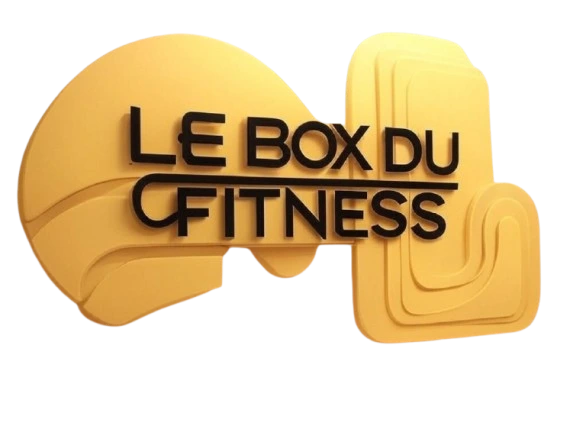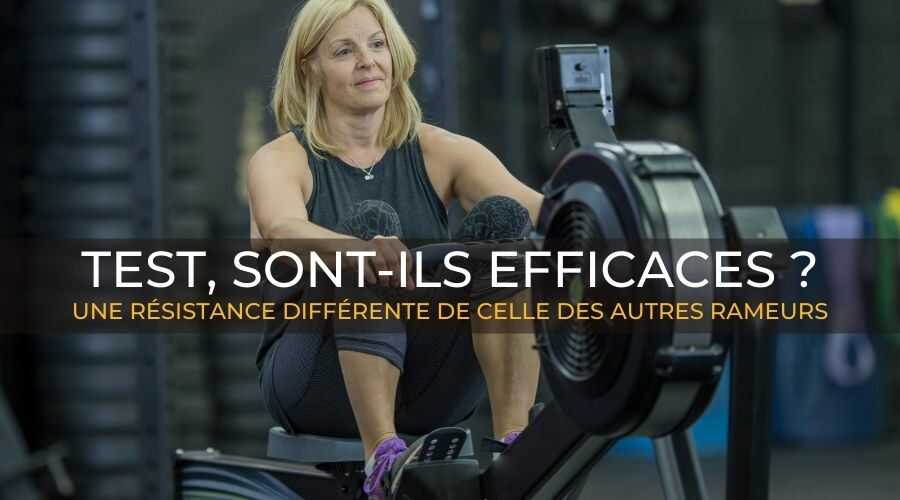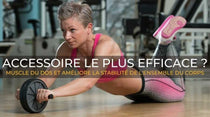The resistance of the SumFit™ Elastic Rower is excellent for anyone.
People who want to do moderate exercise for 20 minutes a day and don't expect very high resistance will enjoy the rower.
The Elastic Rower is controlled by resistance that is very different from most other rowers.
Instead of air, water, magnetic or hydraulic piston resistance, this rower uses a "bungee cord" or "elastic rower" system.
The rowing motion is the same, but users now feel resistance in both the forward and backward movements.
For example, when a user drives with his legs, he will feel the resistance of the elastic cord getting tighter and tighter until his legs are fully extended and the handle is pulled towards his chest.
As he performs his recovery stroke to return to the start, he will feel the tension of the elastic cord wanting to "pull" him back. This means that the user will have to use his muscles to control his return.
Since there is resistance when moving forward and backward, we call this "two-way" resistance.
Benefits of resistance
-
The Sumfit™ row elastic resistance has 4 different levels of adjustable tension.
- The elastic cord produces almost no noise, making this rower perfect for use while watching TV, early in the morning or in an apartment.
- Another great benefit of the SumFit™ is the angled seat rail for greater strength and smoother return.
The seat is tilted upward, so the user must push his weight up the rail when performing a rowing motion.
He also has to control his movement to return to the starting position, which requires additional muscle use.
With both the angled seat rail and bungee cord providing resistance during forward and backward stroke, tension is constant throughout the entire range of motion.
The negative points of resistance
The few complaints about the Sumfit™'s resistance come from users who didn't know what to expect when they purchased the rower.
-
The resistance is not designed for the super fit and is more suitable for beginner rowers and people looking to get in a light workout every day.
Older men and women will appreciate the resistance, but a 30-year-old who runs and lifts weights will most likely be disappointed.
-
Another thing to mention is that the resistance will not avoid the resistance of rowing "on the water" like an air or water rower.
This is because the rubber band provides "bi-directional" resistance, whereas when rowing on water you don't feel any resistance during your recovery stroke (return to the starting point).
So one of the positive features of SumFit™ resistance may actually be a negative for some!
Overall, the resistance of the SumFit™ Rowing Band is excellent for anyone.
People looking to exercise moderately for 20 minutes a day and who don't expect very heavy resistance will appreciate this rower .
Is 15 minutes of rowing enough?
The indoor rowing machine is perfect for those who have a busy schedule and don't have a whole hour to get to the gym.
If you focus on giving maximum effort from start to finish, you can get a great 15 or 20 minute full-body workout that will burn over 200 calories.
Walk into any gym, any day of the week, and you'll see many popular cardio machines in use: treadmills, ellipticals, bikes, and even stair climbers.
But why not the indoor rower? Is it because it is always unoccupied that people don't notice it?
Or is it because it seems to scare off new gym-goers, and even seasoned ones, who stick to the machines they already know to work their entire body?
Either way, it's time to dust off that indoor rower and give it the attention it deserves with this 15-minute full-body workout!
Why you should try indoor rowing?
Did we mention this is a full body workout?
According to studies, rowing works 86% of the muscles in the entire body.
This means you're working almost all, if not all, of your major muscle groups from head to toe.
In fact, the rowing motion starts with your feet, legs, thighs, and hips, and ends with your abs, shoulders, arms, and hands, and repeats on the next stroke.
This means you can balance the engagement of each muscle group in your upper body, lower body, and abs!
And by "working" we mean you're building strength AND muscular endurance at the same time.
The rowing motion may work the same muscles as squats, push-ups, or bench presses, but with the rowing machine, you don't need to lift a dumbbell, barbell, or any other heavy weight or equipment!
Additionally, studies have shown that combining strength training and cardio is the best way to burn calories and burn fat. Need we go on?
High intensity, with little to no impact.
Looking for an intense workout without running on the treadmill, jumping or lifting heavy weights five days a week?
Good news, you can do it with the indoor rower! Regardless of your fitness level, as long as you make the effort to maintain good technique throughout the session, the risks of injury are very low.
This also means you can increase your strength and endurance training each week, without adding extra impact or needing more recovery time between sessions.
Oh, and if you're recovering from an injury, the rowing machine is one of the best choices you can make when getting back into the gym for the first few weeks or sessions.
Indoor rowers are versatile and have customization options to help you reach your fitness goal.
No matter what your fitness level is, you can perform different forms of exercises on the rowing machine to help you achieve them.
If you like to get in a quick cardio session before a strength workout, hop on the rower for 5 to 10 minutes with minimal resistance.
This is a great way to warm up your major muscle groups before a workout.
In addition to using the rower for circuits or total-body workouts, rowing at a slow pace with light resistance can be a perfect option for active recovery on your rest days each week.
You don't need to spend a lot of time on the rower to get results.
Indoor rowing is perfect for those who have a busy schedule and don't have a full hour to get to the gym.
If you're committed to giving your best effort from start to finish, you can have a great 15- or 20-minute full-body workout that will burn over 200 calories. All you need is a little motivation!
The keys to indoor rowing
If you missed our article on how to row using the rowing machine, now is the time to check it out!
But don't worry, we'll still refresh your memory to make sure you're using proper form on the rower.
Complete movements consist of four phases: reception, impulse, arrival and recovery, each part being as important as the others!
In order to progress in rowing, it is essential to learn the correct form for each phase to achieve optimal speed and power for your strokes.
It may seem daunting at first, but don't let this sport discourage you!
If you stick with it for a few weeks (or even months), you will start to see progress and results, and soon you will have perfect full movements with good technique.
Ok, let's move on to breaking down the correct form!
-
In the grip stage, which is actually the starting position, you sit on the seat with your feet hip-width apart in the footrests and your knees bent, and you reach your arms out in front of you to grab the handle with each hand.
-
You will need to lean forward slightly, so make sure to maintain good upper body posture with your torso upright, abs engaged, and shoulders back.
-
For the training phase, you will start the run with your legs and thighs by lifting the foot plates off the ground with the heels of your feet, while leaning forward with your arms.
-
Once your legs are straight and your knees are no longer bent, rock your hips to open your chest and torso so you lean back.
-
At this point, you're going to bend your elbows out to the sides and row the handle towards your sides in one motion - it shouldn't feel like you have two separate parts.
-
In your mind, think of the finish phase as a very brief rest period, one or two seconds at most.
-
Here, your legs and knees are extended in front of you, your torso, chest, and shoulders are all leaning back, and your arms and grip are tucked into your body, with your elbows pointing out to the sides.
-
You must have exploded the foot plates with such force that your toes and feet are resting against the foot cages.
-
The recovery phase consists of repeating the actions you just did to get here, but in reverse order!
-
Lean forward and release your arms toward the weight table, removing the bend in your elbows. Make sure to bend at the hips to be able to perform this movement.
- Note: This phase should take twice as long as the workout (one second for the workout and two seconds for the recovery).
And then, repeat! Doing each phase once is considered one repetition or one move.
How to measure rowing sessions?
Before we get to the actual training on the rowing machine, let's talk about something else: ways to measure your training, because you're spoiled for choice!
With both the treadmill and elliptical, you can track elapsed time (minutes and seconds) and distance, and you can also see calories burned once you enter your weight.
With the rower you can also see elapsed time, calories and distance, but note that distance is measured in meters, not kilometers.
Many people get confused when we start using terms like stroke rate, split time, and watts.
The stroke rate (SPM) is the number of beats you make per minute, and it is indicated on the ergometer as s/m.
Your split time indicates how fast you can row 500 meters, which is equivalent to a runner reporting their time per kilometer.
Finally, the watts metric measures your power output, or more specifically, the amount of power and energy your rowing strokes generated.
15 minute rowing workout for fitness level.
This quick but effective indoor rowing machine workout is one of the best total body workouts.
It helps to complement muscle training and work on cardiac endurance, while burning calories and fat, and did we mention that sessions should only last 15 minutes?
Because this workout is measured by distance and speed, not time, it's perfect for the Le Box Du Fitness level because you can go at your own pace (we've recommended target running rates below).
Grab your water bottle and get to work!
-
100m slow : use this time to warm up each body part and major muscle groups, and really focus on the technique of your movements. Aim for a pace of 18-24 SPM.
-
50m Fast : This is one of your first sprints. Go as fast as you can while maintaining good form and technique - aim for a speed of 28-36+ SPM.
2 minute break: grab a glass of water and regroup before your next 200 meters.
-
200m Slow : Use your strength here to get maximum power on each stroke. Aim for 18-24 SPM again.
1 minute break: Are you starting to understand the concept now? Take a breath if necessary.
-
Slow 100m : Get into a rhythm with good technique, the 100 meters will go fast! Keep aiming for 18-24 SPM.
-
50m Fast : Remember, don't give up speed for technique! Aim for 28-36+ SPM and see if you can reach your maximum speed for this workout.
2-minute break: you're almost there! The next two intervals will be the hardest, you guessed it!
-
300m slow : find your rhythm and target your speed at 18-24 SPM.
-
Fast 100m: Push through your heels and engage every muscle group in your body. This is your last work set; you only have a few seconds left! Aim for a speed of 28-36+ SPM.
-
500m slow cool-down: 500 meters is the longest row, but don't worry, it's just the cool-down. Adopt the pace that suits your body.
If you're looking to improve your fitness or are looking for something new after a few weeks of rowing, try turning this exercise into a strength training circuit that you can do with your friends next time!
Just before your rest periods, add one or two exercises that you can do next to your rower on the floor with limited equipment (dumbbells, kettlebell, barbells, etc.).
Do repetitions of each exercise for a certain number of seconds, or do repetitions.
Here are some ideas to get you started :
-
Stationary lunge or leg curl (make sure to do both sides).
-
Dumbbell Leg Curls
-
Dumbbell or barbell bench press.
-
Dumbbell Triceps Extension
-
Dumbbell bicep curl
- Plank (elbows on the floor, or in push-up position)
If you decide to add strength movements to this circuit, be sure to use light weights and not heavy weights, as you don't want to fatigue too quickly.
Also, plan and choose your exercises in advance to ensure you can balance the body parts and muscles you are working!


















